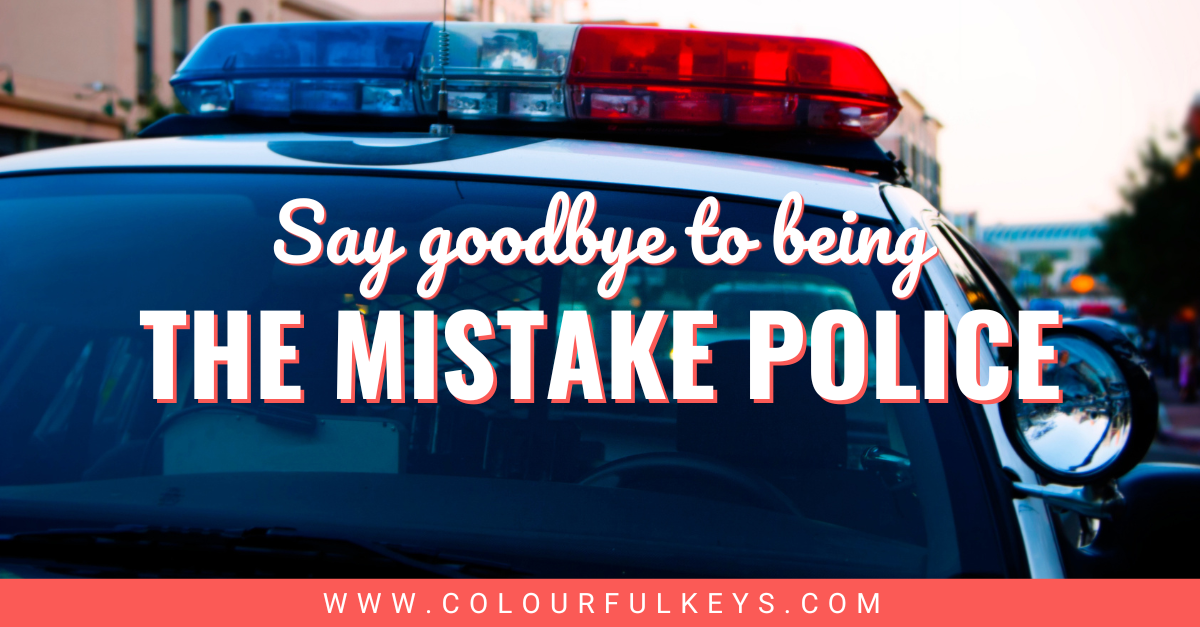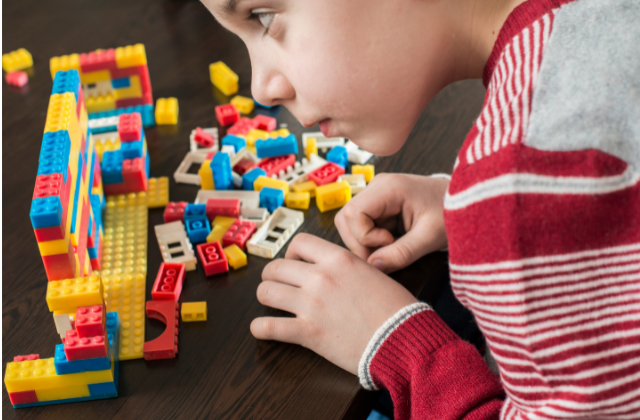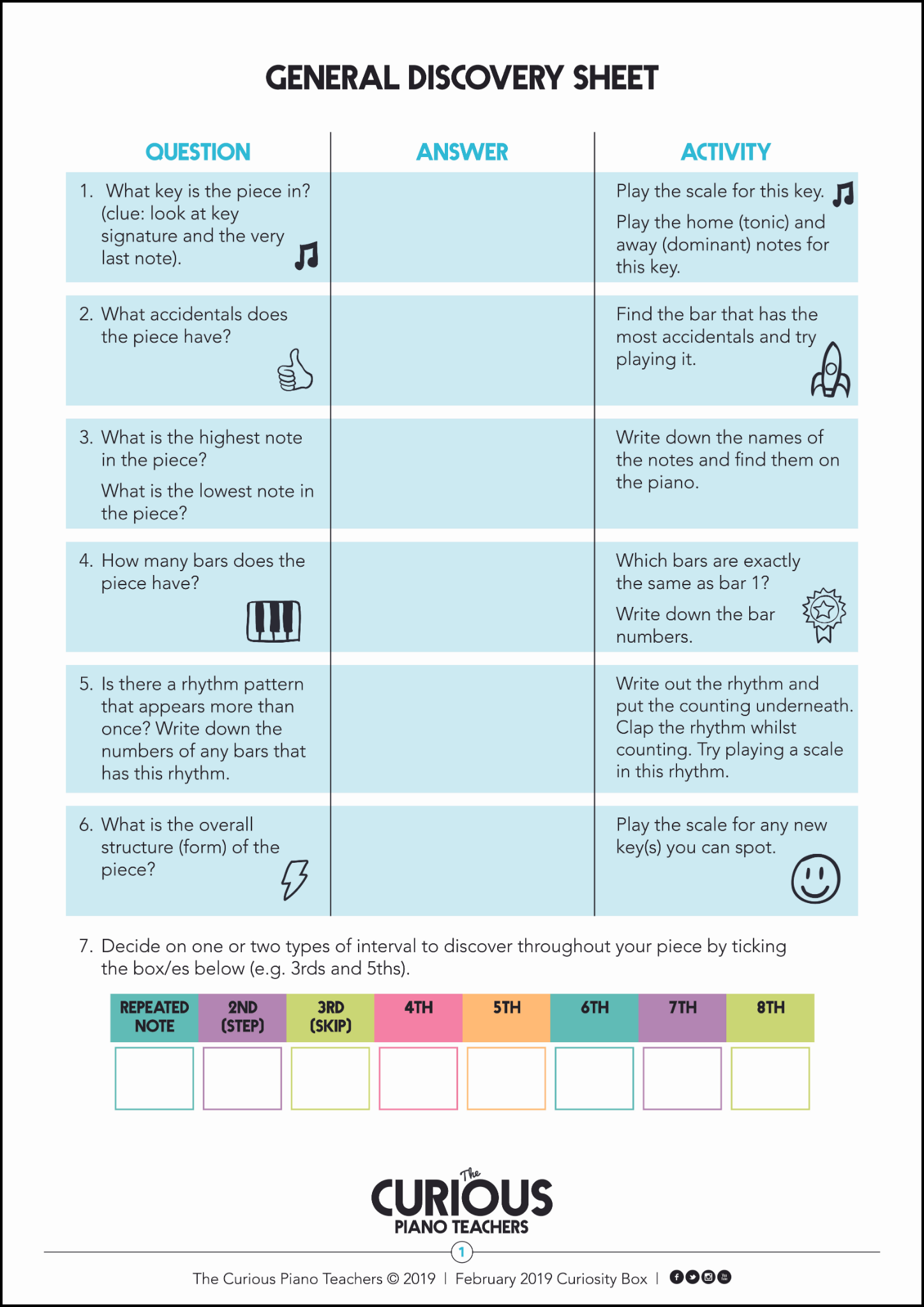
This article about messy piano teaching was written by Hannah O’Toole. Hannah is a piano teacher based in the Cotswolds, UK, and Community & Marketing Manager for The Curious Piano Teachers. Fuelled by copious amounts of coffee, Hannah works closely with Sally and Sharon to support a global online community of Curious Piano Teachers at www.thecuriouspianoteachers.org. When off-duty, Hannah loves relaxing with her family, reading books and hanging out with her crazy miniature schnauzer, Hugo.
Are you tired of “let’s start at bar 1” when you introduce a new piano piece to your students, yet notice them floundering to read the piece? There has to be a better way, right?

We’re probably all too familiar with the “bar 1” teaching approach. The teacher introduces the new piece, playing from the beginning, and then asks the student to play the passage back. The teacher then corrects the student and asks them to play again.
Rinse and repeat until the student makes it to the end of the piece.
Many of us have been there, both as students and teachers. But it’s an ineffective way of teaching and learning, and new research has uncovered why.
What’s wrong with starting at the beginning?
Respected music educator Paul Harris, creator of the Simultaneous Learning approach, talked about this very problem at a training session I attended at Rendcomb College. I was challenged to look at my own “bar 1” teaching approach. There had to be another way – I didn’t want to be the “mistake police”, as he put it so aptly!
I wanted my students to enjoy learning the piano and take charge of their own learning, not develop an unhealthy dependency on my input and continually focus on problems in their playing.
That way, surely, madness lies.
Instead, it was time to get messy.
What is the “Messy Piano” approach to piano learning?
What do you think of when you hear messy? Perhaps untidy or dirty. Perhaps the words disorganised, chaotic and/or cluttered come to mind.
How on earth do we apply this to a piano lesson?!
I think the most helpful definition to tease out here is nonlinear progress – or in other words, learning that is exploratory, goes on tangents and isn’t planned out to the letter.
Creating Shapes of Learning
There is a growing body of research evidence to back up what we might already know as piano teachers: Humans learn in squiggly ways.
In his Medium article, Eric Hudson argues, “While historically we have planned courses as single straight lines, we need to start thinking in terms of spirals, webs, latticework and other more-complex shapes.”
Getting Conceptual
Oftentimes, students have to learn and relearn a concept several times before it sticks.
In the book Unconditional Teaching, Paul Harris explores the idea of “liminal space” as a place between “Don’t Know” and “Know”. Learning happens best when piano students can comfortably sit in this in-between stage.
Harris explains that it is much more fun, and less shame-ridden, for students to think of learning as, “I don’t quite have this yet, but I will!” over, “I can’t do this!”
Are you a member of Vibrant Music Teaching? Try Yeti Yetters, a fabulous resource for practising the mindset of “not yet!”
The “Not Yet” approach encourages piano students to take control of their own learning in a non-judgemental way.
What might nonlinear learning look like in a piano lesson?
If you’d like to start adding more exploratory play to piano lessons, keep the following principles of “Messy Piano” in mind:
- Making music should be at the heart of all lessons.
- Every pupil is unique and needs an individual and tailor-made approach.
- All learning should be framed within a structured and progressive curriculum.
- All learning should have the principle of the sound before the symbol at its heart.
- Pupils should be encouraged to learn through a process of exploration and discovery.
- Lessons and learning should have a sense of energy moving between pupil, teacher and piano.
- Lessons should engage the curiosity, imagination and creativity of pupils and teachers.
All learning should encourage independence through self-reflection.
If you don’t have a curriculum of your own, enter your info below and Nicola will send you the 5-day “Curriculum Kickoff” challenge so you can get clarity around what you’re teaching, and when.

Subscribe to the newsletter and get the Curriculum Kickoff challenge
Enter your details to subscribe to the newsletter for piano teachers with information, tips and offers.
I hate spam as much as you do! I will only send you emails related directly to piano teaching and you can unsubscribe at any time.
Members of the Vibrant Music Teaching awesomeness can access the challenge in the member site. Not a member? Boy, are you missing out! Take a tour to learn more.
Starting a New Piece the “Messy Piano” Way
So how do we approach a new piece with a student in a messy way? There are just 2 things to think about:
- Know your student’s repertoire well and separate out the musical concepts and skills they’ll need to learn before starting each piece.
- Identify “curious possibilities” for your student to discover the music for themselves.
Pre-Framing Pieces
Have you ever noticed how students love to play pieces they already know or have heard before? Pre-framing a new piece is a great way to introduce new music.
The week before you want to work on a new piece, simply play it through to your student towards the end of the lesson.

As a bonus, you could send them home with an audio recording of the piece and ask them to listen to it several times during the week as part of their practice.
Active Listening
The following week, you could introduce the piece fully and encourage active listening by asking questions such as:
- Did you notice any patterns in this piece?
- What was the form?
- Can you sing back this melody?
- What do you think this piece was about? Why?
If you’re a member of Vibrant Music Teaching, you can save preparation time and turn active listening into a game with these amazing active listening cards.
Again, you could set this “active listening” assignment as part of their piano practice throughout the week by sending them home with a list of questions to think about as they listen.
Discovering the Music
If your student is intermediate to advanced, send them home with what I call a “discovery sheet”. This is a worksheet that is designed to engage their curiosity.
It might include activities such as:
- Counting the number of bars/measures in the piece
- Working out the tonality (major, minor, modal or other)
- Identifying the scale and playing it
- Searching for patterns and identifying intervals in the music
- Improvising on phrases or patterns in the music
Taking students through the analysis process using a discovery sheet like this one is a great way to explore a new piece with a student while avoiding the “bar 1” approach.
Nicola has an amazing site devoted entirely to planning lessons, including different approaches to teaching and working with all kinds of students and repertoire. You should check it out!
What are the other benefits of “Messy Piano” learning?
Nonlinear learning is obviously a great way to teach a new piece of music, but what other skills could it help develop in our piano students?
Independent Thinking
Getting students to think about their piano learning in a more curious and open way encourages critical thinking.
I’ve found that students are more willing to take charge of learning when they start to ask more questions, get comfortable with not knowing how to do something yet and develop a sense of fun and curiosity around the learning process.
Building Musical Legos
“Messy Piano” also encourages a sound knowledge of musical skills and concepts, as students are involved in identifying the core elements of a piece for themselves – “meta” knowledge, if you like.
If students have a sound knowledge of musical skills and concepts, it opens the door for their own creativity.
If you’ve ever taken apart a Lego model, engine or even a piece of IKEA furniture, you know what pieces there were and how they fit together.
You might start by rebuilding the thing as it was intended, but once you have an understanding of how the pieces were designed to fit together, you might decide to modify the design or even change it completely.

Students approaching a piece of piano music using “Messy Piano”’ are building a similar toolkit they can use for their own improvisations and compositions.
Working With Neurodiversity
As “Messy Piano” learning is tailor-made for each student, planning for students with special needs makes perfect sense.
Breaking a piece into its separate ingredients, or musical elements, means you can explore each one at the student’s pace.
Planning lessons the messy way requires more creativity (although not necessarily more time) from us as teachers, but that’s a good thing. It keeps us engaged and learning too, which is ultimately more fun for us as teachers!
Saying Goodbye to the “Mistake Police”
Hopefully this article has inspired you to get messy in your piano lessons. For myself, I’ll be waving goodbye to the “mistake police” this year. (Thank you to Paul Harris, for this phrase which will stay with me and for challenging me in this area!)
If you’re new to this idea of teaching, here are some practical steps you could take to get started:
- Pre-frame new pieces by listening and introducing them a week or two before your student starts playing them.
- Use a discovery sheet to encourage students to make their own analyses of new pieces, breaking them down into their musical ingredients.
- Make the concepts and skills we identify be the basis of new creative activities in lessons and facilitating students to make their own connections in their learning.
How will you include more “messy piano” in your piano teaching?
I’d love to hear your thoughts in the comments below.
You can learn more about Hannah and the idea of “messy piano” at The Curious Piano Teachers’ blog.
